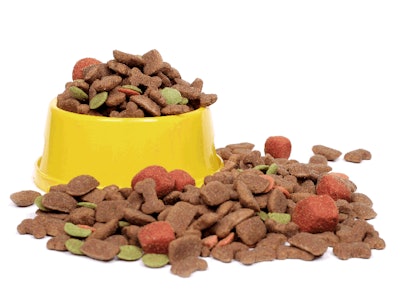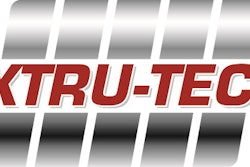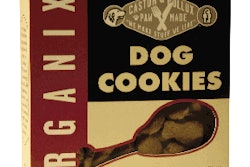
Petfood company executives are determined to continuously improve plant performance. Whether or not they have formal programs such as Six Sigma and total quality management, there's usually constant pressure to improve quality and performance. Success often requires processing innovations.
Notes Food Processing magazine, "Processing innovation is alive and well." As proof, it cites five up and coming technologies:
Supersonic processing: this mixing-heating-pumping system, called PDX Sonic, rolls as many as five processing steps into one.
High-pressure processing: Avure Technologies Inc. offers a sterilization system that can greatly extend shelf-life.
Bioseparation: on the way are more economical technologies to isolate and extract functional food ingredients.
Radio frequency heating: a method still in development, this heats product at the molecular level, heating the surface and the center of a product at the same time.
Carbon dioxide extrusion: allows extrusion at lower temperatures, so heat-sensitive ingredients can be added before extrusion.
Regarding CO2 extrusion, Galen Rokey of Wenger Manufacturing doubts we will see anything commercially for petfood for some time. "Not because it isn't a feasible technology," he says, "but because there currently are no processing advantages for petfoods."
Following is input from three extruder manufacturers, covering new developments.
Multicolored kibbles with a single extruder
The extrusion technologists from Buhler have come up with a way to make multicolored extruded products on a continuous basis, using a single extruder. "The heart of the new process," notes Christian Gutmann, head of technology at Buhler, "is an additional module consisting of colorant tanks, each equipped with a pump and connected to the extruder."
Also, the process geometry has been adjusted so color blurs at the points of transition between the individual colors are prevented. During the production process, the colorants are fed alternately into the processing section of the extruder. The special thing about this is that the time intervals are kept very short to eliminate the need for subsequent mixing in an additional step. Mixing during conveying, spraying and drying is sufficient to obtain a homogeneous mix. In addition, it is possible to utilize the color circle theory to obtain intermediate colors. This allows, for example, six different extruded products to be made from three different colors.
The add-on module does not require its own control system. The metering pumps receive their signal directly from the control system of the extruder.
The benefits of this new process are:
The investment cost is lower because less equipment is needed.
The space requirement is reduced.
The elimination of the mixing process reduces the mechanical abrasion of the product.
The modularity of the system enables existing lines to be easily retrofitted.
Easier treat production
Roughly 75% of all dog and cat food products are mixtures of different shapes and colors. Traditionally, producing multicolored product was either through:
Blending bin systems or
Multiple extruder line systems.
However, both of these methods are costly and consume valuable production floor space. Thus, Extru-Tech Inc. developed a multicolored/multishaped die solution that allows simultaneous production of a blend of colored products from a single extruder system.
This supplier has also been working on new methods to allow existing extrusion equipment to produce soft-moist co-extruded and treat products. As a result, Extru-Tech is on the verge of releasing a single screw extrusion solution capable of producing a wide range of simple to complex co-extruded foods and treats that can currently only be realized through use of twin-screw technology. "This advancement in extrusion technology," says Extru-Tech's Norm Schmitt, "provides current single screw extrusion users the ability to move into complex co-extrusion production with a limited learning curve and much reduced capital expenditure."
Bulk density trouble-shooting
"In many cases the single largest petfood processing issue is the product's bulk density," says Brian Plattner, processing engineering manager at Wenger Manufacturing. If it is desirable to lower the bulk density of extrusion cooked petfoods, the following processing variables may be altered as described. Since the recipe has the single largest impact on density, keep in mind that these changes are subject to the formulation, as not all formulations will react in the same manner.
Moisture content: Generally, lowering the water content injected into the product without decreasing the steam level added to the product will assist expansion. However, when extruding formulations containing high protein (above 23%) or high fat (above 5%), it is necessary to increase total moisture by adding both steam and water. Once the moisture level in the extruder barrel drops below 20%, further decreases in moisture will result in increases in product density.
Dry feed throughput: Increasing the dry feed throughput will in effect reduce the open area in the final die per unit of throughput. This reduction in open area results in greater expansion. As the feed rate is increased beyond a certain point, the density begins to increase due to the loss of retention time in the preconditioner and extruder barrel.
Mechanical energy: The mechanical energy input can be adjusted by changing the extruder screw speed, final die setup or screw profile. Higher screw speeds, less open area in the final die and the addition of cut-flight screws or shear locks all will add additional mechanical energy and decrease bulk densities.
Temperature: Indicated temperature profiles of the product along the extruder barrel can be increased if the product is under expanded.
Preconditioning: Increasing the residence time in the preconditioner and the amount of steam added to the product will assist in cook and expansion. The residence time in the preconditioner can be increased by changing the paddle configuration, adding a residence time control package or lowering the throughput.
Steam injection in the extruder barrel: Injecting steam directly into the product along the extruder barrel will tend to lower the bulk density.
Oil addition: Addition of oil will increase product densities. In general, for each 1% of fat above 12%, the bulk density of the final product will increase by up to 16 grams per liter. Once the total fat content in the extruder barrel exceeds 22%, product durability is difficult to maintain and could result in excessive fines. Typically as the fat level increases, the moisture must be increased as well for adequate processing.
Removing barriers
"The greatest barrier to the implementation of new processing technology," notes Food Processing magazine, "is lack of internal support, whether caused by lack of funding, lack of knowledge or lack of interest."
Lately, most research investment within petfood processing companies is directed at new products. This is a primary reason that few new processing technologies are supported at the processor level. R&D and engineering can encourage management to invest in technologies that have a good return on investment and allow the "first to market" advantage.















